The citations for this blog were compiled with help from ChatGPT and Copilot. The output was reviewed by the authors for accuracy and fit. The AI tools did not contribute any original ideas to the report.
Africa’s future has never been in aid—it is in Africans’ hands. If Africa acts now, it won’t just feed itself—it will feed the world.
Decline in donor assistance
Prominent donor countries are implementing major cuts in official development assistance (ODA).1 These nations are cutting civilian spending (often to reduce post-pandemic deficits) while increasing defense spending in response to geopolitical tensions. ODA is an obvious target for cuts, particularly as many donor countries witness the rise of populist political parties that do not believe in its benefits. The United States has shut down USAID, and the European Commission is slashing funding through its Neighborhood Development and International Cooperation Instrument by 2 billion euros. The U.K., likewise, is cutting its ODA by £6 billion, Germany is slashing 4.8 billion euros from its development and humanitarian budget, and France is cutting its ODA by 1 billion euros.2
Africa bears the brunt of those cuts. Absent action from African countries, the cuts in ODA, together with debt distress and lack of access to financial markets, could have a large impact on Africa’s development—especially on its food and nutrition security. Finding financing for food imports and for investments in development projects is becoming more difficult. Africa’s debt has more than doubled over the last decade, and 20 low-income African countries are either in debt distress or are at a high risk of debt distress. According to the Food and Agriculture Organization of the United Nations (FAO), 300 million people in Africa have faced hunger in 2023. Malnutrition is a particularly serious problem in Africa, where 30% of children are stunted.
African agriculture
Faced with this situation, Africa should aim to feed itself and even export food to the rest of the world. According to FAO statistics, Africa has 1.1 billion hectares of agricultural land, which translates into about 0.9 hectares per capita—30% higher than the world average of 0.6 hectares per capita. Why is a continent with so much agricultural land spending $100 billion per year on food imports with 20% of its population suffering from hunger? The answer is low productivity. At 1.7 tons per hectare, cereal yields in Africa are less than one-half the world average of 4.2 tons. Low yields reflect the high dependence on rainfed agriculture as well as a low use of fertilizers and modern technology. Only 1.5% of agricultural land in Africa is irrigated, compared to a world average of 7.3%, and African farmers use just 16.3 Kg of fertilizers per hectare compared to a world average of 72.9 Kg.3
Africa invests only 5.2% of agricultural GDP back into agriculture. Compare this with 8.7% in Asia and 7.3% in Latin America. It is clear that to increase yields, Africa needs more public and private investment in agriculture. Expanding agricultural infrastructure—rural roads, irrigation systems, processing facilities, and storage hubs—is critical to making Africa’s food systems more competitive, resilient, and profitable. Government budgets need to prioritize these investments in agriculture. In 2022, African countries spent about 3.8% of their budgets on agriculture. This is significantly below the 10% target set by the African Union’s Malabo declaration of 2014.4
In addition to public investment, governments need to encourage more private investment in agriculture and agribusiness. Unlocking Africa’s agricultural potential requires stronger public-private partnerships that bring together investors, agribusinesses, and policymakers. There are a few good examples of public-private partnerships on the continent that are starting to transform agriculture into a powerful economic driver. Nigeria’s Oyo State’s Special Agro-Industrial Processing Zone is demonstrating how agriculture and industry can work together to create jobs and drive economic growth. Similarly, Sierra Leone’s flagship Feed Salone initiative is redefining agriculture as a business while fostering private-sector engagement, investment in key value chains, and technological innovation.
A strong private sector must be backed by a strong research and innovation ecosystem. Africa is home to several important agricultural research institutions, including the International Institute of Tropical Agriculture (IITA), Africa Rice, and the International Livestock Research Institute. But these institutions remain underfunded, disconnected from private sector investment, and often sidelined in national food security strategies. This must change. Africa spends 0.39% of its agricultural GDP on research, far below the NEPAD recommendation of 1%, and a big decline from the 0.54% it spent in 2000. By contrast, Brazil spends 0.9% of its agricultural GDP on research and the United States spends 0.7%.5
Sierra Leone provides a good example of how research and innovation can contribute to food and nutrition security. The country is partnering with IITA to integrate advanced agricultural research into its national food systems strategy. At the same time, the government is strengthening the Sierra Leone Agricultural Research Institute by mobilizing funding and investing in international training and technology—ensuring that homegrown solutions reach farmers, improve yields, and enhance food safety and food security.
Agriculture at the regional level
Regional integration and cooperation are key for enhancing African food security. It is difficult for each of the 54 African countries to achieve food security on its own. But working together they can. The African Continental Free Trade Area—which envisions a tariff-free market across 54 countries representing 1.4 billion consumers and a combined GDP of over $3.4 trillion—provides an opportunity for greater agricultural trade among African countries and food security for all Africans. A prime example of this regional integration can be seen in the fertilizer trade. Africa spends $15 billion annually importing fertilizers, and it lags far behind the rest of the world in fertilizer use. Most African countries cannot sustain large-scale fertilizer production on their own, but regional partnerships can make it viable.
The difficult geopolitical situation and the major cuts in ODA by donor countries should be a wake-up call for Africa. The continent needs to move away from aid dependency in general, especially in food and nutrition security. It needs to increase public and private investment in agriculture, develop the continent’s agricultural research capacity, and enhance regional integration.6 Africa’s future has never been in aid—it is in Africans’ hands. If Africa acts now, it won’t just feed itself—it will feed the world. The question is not whether Africa has the potential, but whether Africans have the political will to act—and to act together. In addition to achieving food and nutrition security, agriculture could be the driver of regional growth.
-
Footnotes
- For a discussion of the decline in ODA and its impact see Shafik (2025) and Frankel (2025).
- For more details of ODA cuts, see Dufief (2025) and Mackinnon (2024).
- See the FAO’s State of Food and Agriculture 2024.
- See FAOSTAT.
- See Plastina and Townsend (2023)
- For a detailed proposal for a pan African food security initiative, see Ghanem (2022).
The Brookings Institution is committed to quality, independence, and impact.
We are supported by a diverse array of funders. In line with our values and policies, each Brookings publication represents the sole views of its author(s).
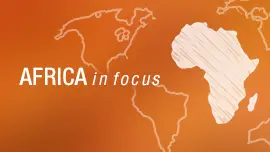
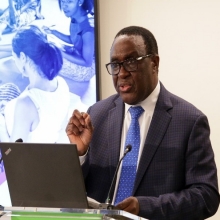
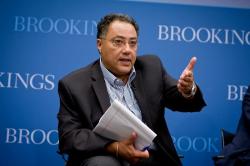
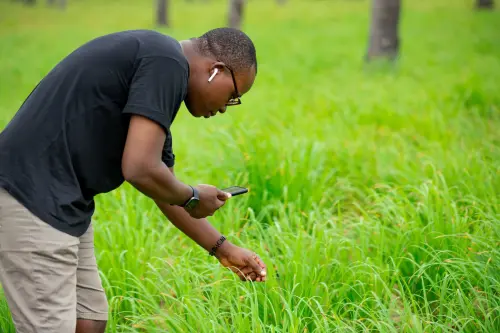

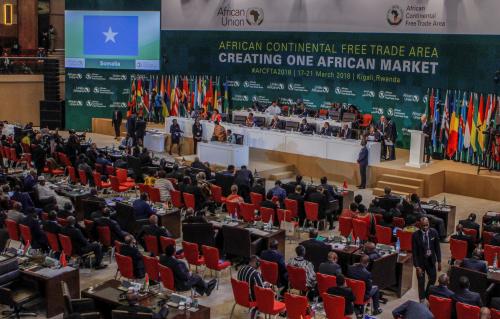



Commentary
With ODA dwindling, Africa’s agriculture sector can drive regional growth
July 14, 2025